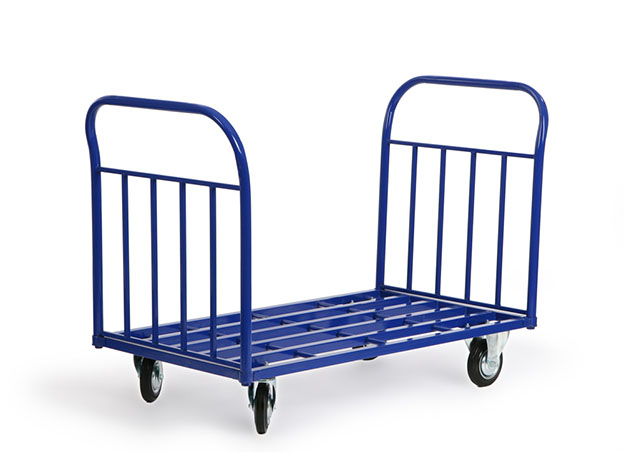Wire carts can be a major asset in your warehouse. While they may not always get the attention they deserve in the warehousing industry, you can use them to improve the ergonomics of your facility. They can also help you improve the order fulfillment and item retrieval process, helping you and your team get products out the door as fast as possible.
You may associate wire carts with your local laundromat, but they can come in handy throughout your warehouse as well. Learn more about how to put wire carts to work for your business.
Moving Inventory from the Rack to the Loading Dock and Vice Versa
Wire carts have wheels, which makes them easier to move. Your team won’t have to manually lift boxes and packages when putting them back on the shelf or moving them to the loading dock, improving the ergonomics of your workplace. Dollies and forklifts can leave your products swaying from side to side, but wire carts keep your products in the basket where they belong, so you don’t have to worry about falling towers injuring your employees. This keeps your inventory safe and sound as you move individual items to and from the loading dock. You can speed up the order fulfillment process without endangering your cargo in the process.
Commercial utility carts are also much easier to use than lift trucks and hand carts. They don’t break down as often and you don’t need to read a user manual to push them forward. Overall, they keep your team moving in the warehouse.
Sorting and Distributing Inventory
You can also use wire carts to quickly sort and distribute your inventory. These carts are easier to navigate than forklifts so your team can easily move them into all kinds of tight spaces. Dollies and hand carts can be difficult to turn on a dime, leading to traffic jams and falling cargo. In this case, your employees may end up carrying items by hand instead of using the cart.
With a wire cart, your employees can quickly load items that need sorting into the cart and then put them back on the shelf where they belong without going out of their way. They can push the cart through narrow aisles without getting stuck or trapped.
Collecting Items for Repair or Maintenance
If your warehouse does more than store and ship products, you can use wire carts to set items aside for repairs. If an item is damaged or a piece of equipment needs your attention, staff members can quickly move items out of the way until they can be repaired. Pushing these carts up and down aisles is a breeze, helping your team move unusable merchandise out of the way quickly–without having to operate a lift truck.
Manufacturing units tend to leave excess parts, scraps and loose pieces on the floor. With a wire cart, the clean-up crew can easily swing by and pick up loose scraps. They can then recycle these parts or move them out of the way, keeping debris off the warehouse floor.
Your team can also use these carts to collect dirty towels, rags, trash and anything else you want to get out of the way. It’s all about keeping your warehouse clean and tidy so your employees don’t trip and fall as they move throughout the space.

In 2016, there were five workplace injuries for every 100 full-time workers in the warehouse and storage industry. Use wire carts to prevent workplace injuries so your employees can do their jobs with more peace of mind.
Keeping Inventory Visible on the Shelf
Wire shelving carts keep your inventory visible so your team can easily identify the item they need and bring it to the loading dock. This method speeds up the order fulfillment process, helping you get orders out the door as fast as possible. When inventory is kept inside containers, your employees may have to open them just to see what’s inside. They may have to spend several seconds checking the SKU number, which can slow down product retrieval.
Every second counts when it comes to grabbing items off the shelf. Keep your inventory out in the open where everyone can see to keep your employees moving.
Invest in wire utility carts today to keep your warehouse moving in the right direction. You can reduce the number of trips and falls and speed up the product retrieval process without having to depend on costly equipment like lift trucks.

